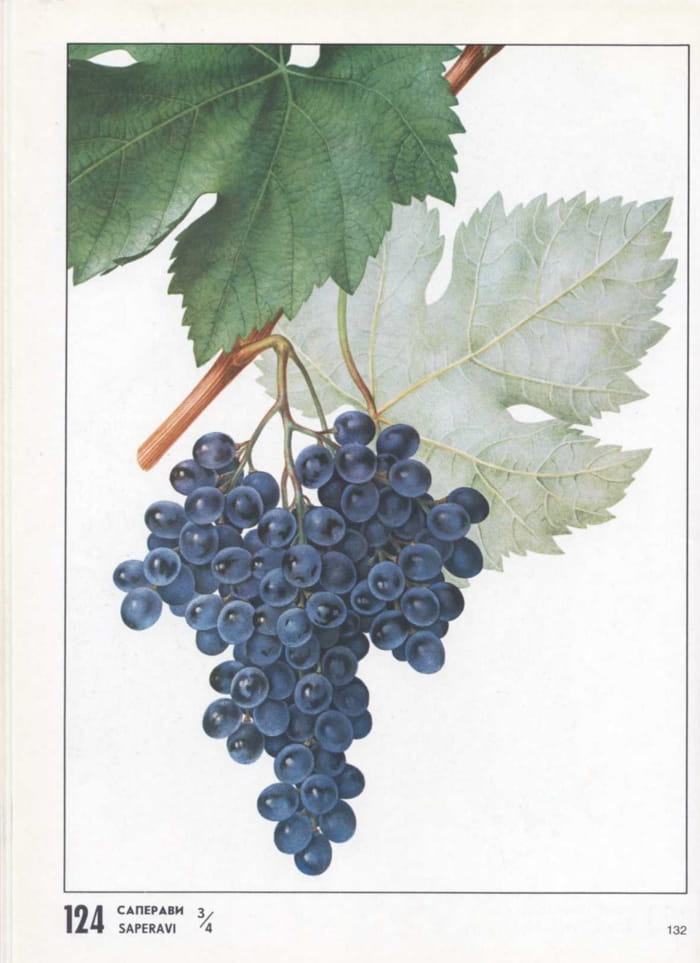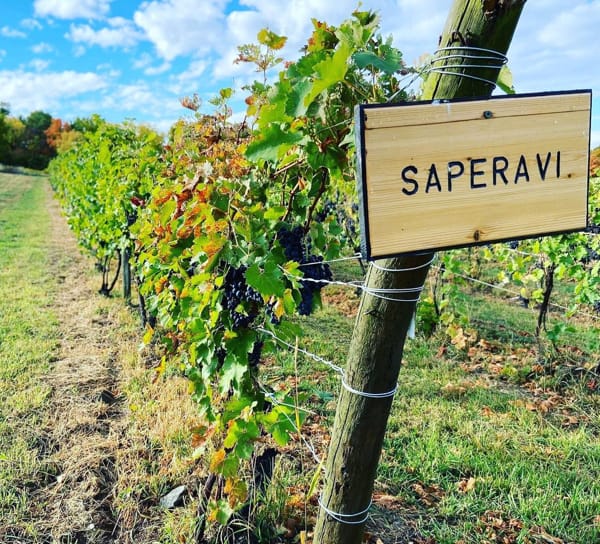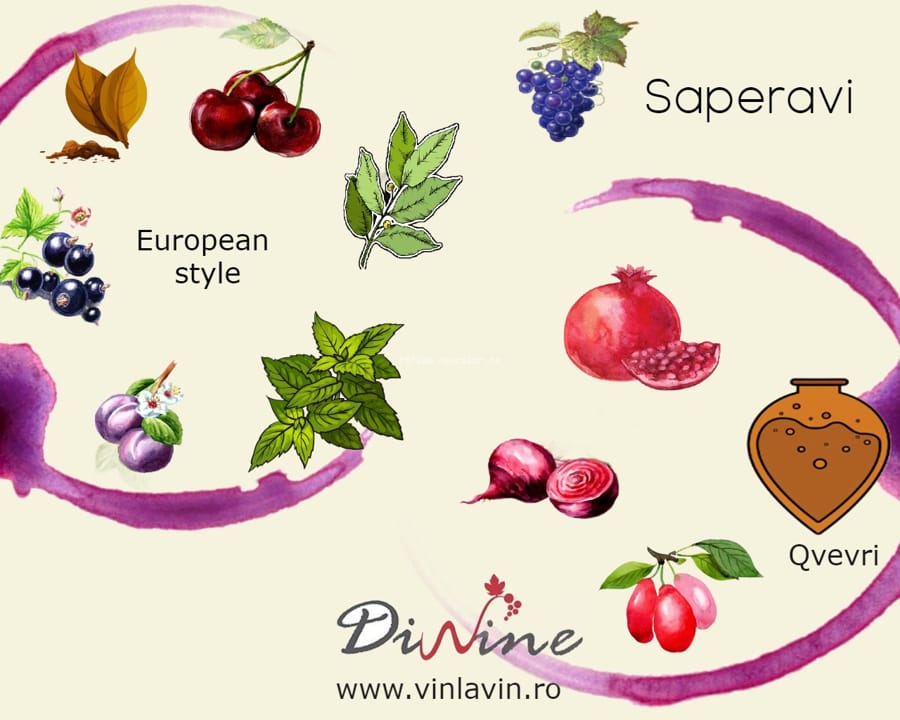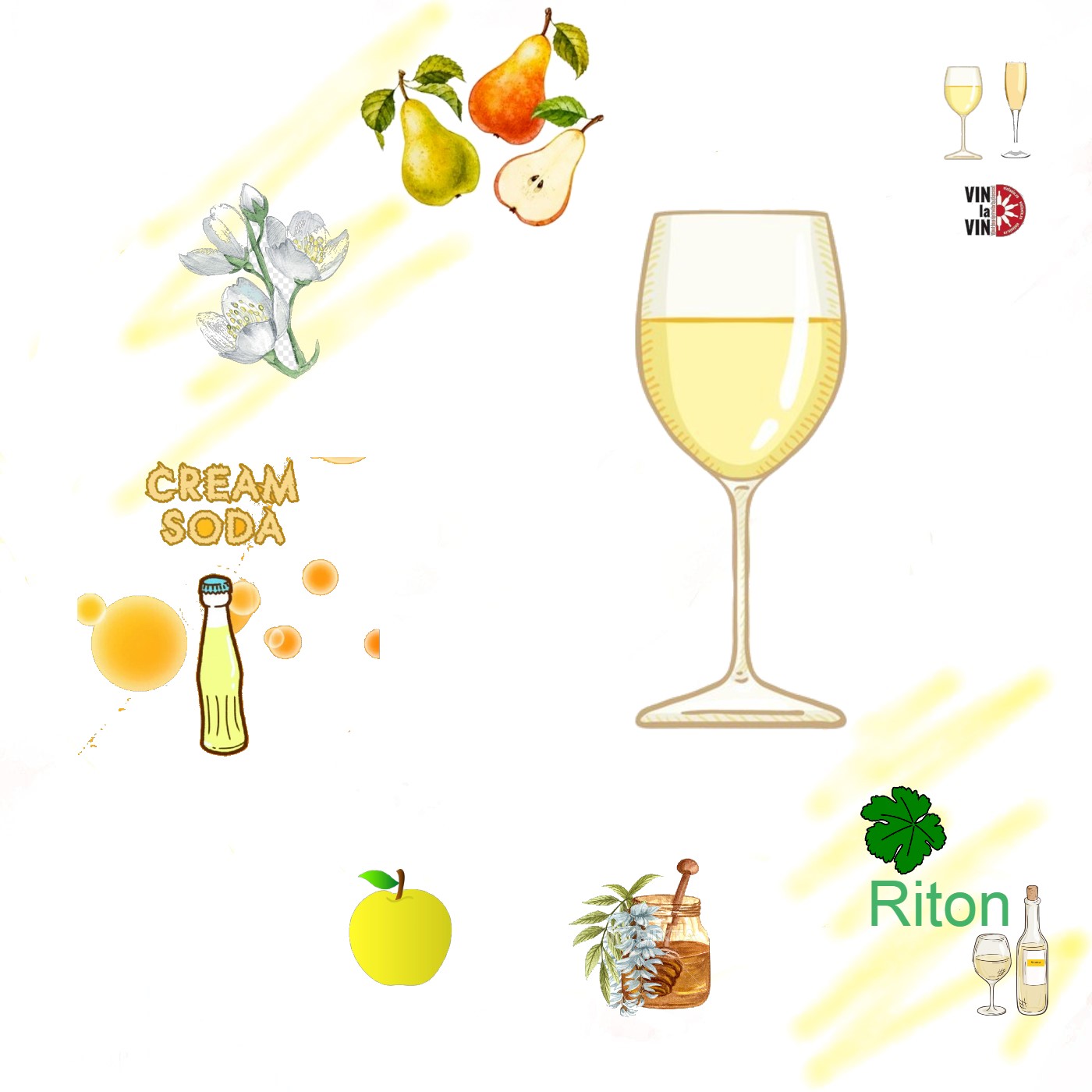The legend of the giant glutton

Before I tell you about the Saperavi legend, I should mention that in Georgia there are many legends about giants who lived on Svaneti mountain, far from the eyes of the world. Moreover, in 2011 the bones of a giant were found in the Borjomi Valley, which further strengthened the local people’s belief that their ancestors were giants.
Legend has it that a giant named Hechio once lived in these lands. The giant was very strong but greedy. He loved bread and wine. Although he was a very industrious giant and had everything, he could not quench his appetite and thirst for wine. One rainy year, his vineyard failed to bear fruit. So he prepared some gifts of bread and mutton and set out to ask the king of giants for help. Arriving before the king, Hechio was sent to drink as much wine as he wanted from the king’s cellar. The greedy giant drank all the wine in the amphorae. He even put his best wine in his small but very bulky flask.
On the way to his valley he stopped to rest. When he awoke, a man with whiskers and a staff was standing beside him. He offered to help him carry the bundle home. This was how the man had learned from the greedy giant how to make the big vessels called kvevri. He even tasted the giant’s wine and liked it. That wine was called Saperavi.
This is why Georgians still call Saperavi wine “the blood of giants”. Not only because it was brought from giants, but also because it resembles a wine giant: strong, intense, dark red. The wine whets the appetite and goes well with bread and mutton.
Agrobiological particularities
Saperavi is the oldest and most widespread Georgian grape variety. It belongs to the Black Sea Basin variety group, Vitis vinifera convar. pontica Negr. Compared to other eastern varieties, the varieties in this group have a shorter growing season and can adapt to a climate close to that of their native country, namely a climate with dry summers and colder winters. It can be found both in some former Soviet republics such as the Republic of Moldova, Ukraine, Armenia, Azerbaijan, including Bulgaria, Australia and the USA. Moreover, practice has shown that Saperavi, along with Rkatsiteli, thrives quite well in Central Asia, yielding successful wines.

The variety is relatively cold hardy, able to withstand temperatures of -20°C, but it is vulnerable to phylloxera and cryptogamic diseases, demonstrating susceptibility to grapevine moth. Soils rich in cernozum are not suitable for the variety. The plant can develop a lot of leaves, which reflects on the quality of the wine. Therefore, soils with lower mineral content and light structures through which water and air can easily penetrate are recommended. It does not thrive on heavy clay soils that retain moisture. On calcareous soils, the variety can be affected by chlorosis.
Saperavi has an affinity for the rootstocks Riparia x Rupestris 101-14 and 3309, and to avoid chlorosis on calcareous soils the rootstock Berlandieri x Rriparia Kober 5BB is recommended. It should be noted that this variety can also be used for consumption, not only for wine production. In this case Chasla x Berlandieri 41 B and 420 A rootstocks should be used.
For the grapes to reach full ripeness, the variety needs, depending on the region, 160 – 165 days and an active temperature of 3100°C – 3200°C. The Saperavi variety has a high productivity of 7t -8t/ha. Grapes can be medium to large in size, conical in shape, strongly widened at the top. In general, the grapes are lacy, but can be even more so. An average grape can weigh 100 g to 125 g, and larger grapes can weigh up to 145 g. The berries are small, slightly oval, with dark purple-blue skin with a dense layer of bloom. The pith is a juicy pale pink colour and the juice becomes faintly coloured.
Saperavi has over 17 varieties and clones. Many of these are found in Georgia: Saperavi Budeshuri, Saperavi Grdzelmarcvala, Saperavi Mskhvilmarcvala and Saperavi Pachkha. For example, Saperavi Budeshuri was also cultivated for a time in Ukraine’s Crimea region. It is a clone variety, early, with elongated oval berries, and the sugar level is higher than in a genuine Saperavi.
Saperavi and genetic selection
- Saperavi has been involved in various individual genetic selections to create new varieties of grapes that perform and possess a certain trait specific to certain environments, etc.
- Saperavi Severny (Northern Saperavi) – was developed at the Viticulture Research Institute “Potapenko” in Novosibirsk, Russia. It was obtained by crossing Saperavi and Severny varieties. The new variety is frost-resistant and relatively resistant to cryptogamic diseases. The kernel is juicy and the must is coloured. The sum of active temperatures for ripening grapes can reach values of 2800°C – 2900°C. Saperavi Severny is used both for the production of dry wines and for making liqueur wines or sweet liqueur wines.
- Rubinovy Magaracha was obtained by hybridising Cabernet Sauvignon and Saperavi. It is grown in Russia, Ukraine, Bulgaria and Italy. The variety has medium resistance to grey mould and susceptibility to manna. It requires 169 days to full maturity and an active temperature sum of 3088° C. Dry red, rosé, semi-sweet and sweet wines can be made from this variety.
- Bastardo Magarachsky was created in 1928 at the Magarach Institute in Ukraine. It also has a more scientific name – Magarach 217. The newly created variety is a cross between Bastardo and Saperavi. It produces high quality wines.
- We can also include in this list some varieties from Romania, such as Negru de Drăgășani or Novac, which involve Negru Vârtos and Saperavi varieties. The famous Ararat region of Armenia has new varieties involving Saperavi – Nerkeni and Tigrani.
Organoleptic characteristics of Saperavi
Saperavi, translated from Georgian, means “dark” or “dark”. Name given to both the skins and the wines made from this variety. The colour of Saperavi wine can be a dark, opaque purple when the wine is young and ruby when mature. Saperavi is also considered the king of red varieties in Georgia.
Produced in the European style, Saperavi develops aromas of dried herbs such as mint, rosemary, bay leaves. Sweet black fruits: cherries, blackcurrants and candied plums. We can often identify aromas of tobacco, ground black pepper, liquorice, chocolate and other sweet spices. In red clay kvevri the specific flavours of the Saperavi variety are: boiled beetroot, pomegranate peels and horns. Saperavi has great ageing potential if kept in optimal conditions. The alcohol level can be different depending both on the region and the style of production. For example, research has shown that, according to the European method, Saperavi will have an alcohol level between 11.4% and 12.1%. According to the Kakheti method, the alcohol level will be between 12.6% and 14.6%.
In terms of acidity, the European Saperavi method will have indicators of 2.20% and 3.15% compared to the Georgian version, which includes values of 1.55% – 2.53%, rarely above 4%. The level of extractability remains high for both methods used.
Saperavi in Georgia

Since 1997, Georgia has established a system of wine protection, Protected Designation of Origin (PDO). Currently, Georgia has 25 PDOs, most of which are found in the Kakheti region.
Even though it is more widespread in the Kakheti and Kartli regions, Saperavi was born in south-western Georgia. Specifically, in the hills of the historic Meskheti region, near the Turkish border. Saperavi was brought to Kakheti at the end of the 17th century, making it his second home. According to 2004 data, the total area of Saperavi plantations in Georgia covers 3704 ha.
Since the Soviet period, several Georgian producers have been advocating the idea of Saperavi wine appearing under a specific name for certain micro-regions. This is how wines with 100% Saperavi varietal involvement appeared under the Mukuzani, Napareuli, Khashmi, Kondoli and Kotekhi labels (the kvevri method is widely used). The demid sweet Saperavi variety with the PDO mention is found in the Kindzmarauli, Kvareli (here the grapes are harvested later) and Akhasheni micro-regions.
According to DPO rules imposed in Kakheti, Napareuli, and Khashmi regions, Mukuzani dry wines will be matured for 3 years in barrels. Demid sweet wines are matured for 2 years, most of which have a refreshing acidity.
Note: Saperavi dry wines, which do not appear under a micro-region name, are matured for one year.
The Saperavi variety can be used to make dry, semi-sweet, rosé, sweet liqueur and tiare reds.
Saperavi in Moldova

Saperavi was brought to the present republic in 1860, to Causeni, for research and creation of elite sectors. The variety spread throughout the territory between the Prut and the Dniester only in 1946-1949, after more planting material had been brought from Georgia. However, Saperavi was best adapted to the southern region, where the climate is more suitable for the plant’s development. And the first successes were recorded at Purcari. Today in Moldova, Saperavi covers an area of approximately 490 ha.
In Moldova, Saperavi is produced both as a single variety and in various couplings with noble European or local varieties. Matured in oak barrels, Saperavi develops an impressive character. During the Soviet period, Saperavi was planted alongside Saperavi Severny. It was planted more in the central areas of the republic, where winters were colder. It was mainly used to produce sweet and tart liqueur wines.
Bibliography:
- Gavrilov; G. Caraji, Determinarea soiurilor de viță de vie. Ed. Cartea Moldovenească, Chișinău, 1989;
- Tarda; I. Romanov, Soiuri de viță de vie în Moldova. Ed. Cartea Moldovenească, Chișinău, 1990;
- Докучаева, Cорта винограда. Ed. Урожай, Kiev, 1986;
- Ампелография СССР, Отечественные сорта винограда. Ed. Пищепромиздат, Moscova, 1946-1984;
- Anna Saldaze, 8000 Vintages of Georgian Wine. Ed. Sulakauri Publishing, Tbilisi, 2018;
- Н. Багатурия – Грузинское виноделие: теория и практика. Tbilisi, 2010;
- Г. Беридзе, Вина Грузии. Ed. Сабчота Сакартвело, Tbilisi, 1962;
- Негруль, Лучшие сорта винограда СССР. Ed. Колос, Moscova, 1972;
- Негруль, Ампелография с основами виноградарства. Ed. Высшая школа, Moscova, 1979;
- Tarda; I. Romanov, Soiurile standart de viță de vie din Moldova. Ed. Cartea Moldovenească, Chișinău 1968;
- Д. Табидзе – Районы виноградарства Кахетии, Материалы по сортовому районированию и специализации виноградарственных районов Кахетии. Тбилиси, 1940;
- Date Wine of Moldova
- Гpузинские народные предания и легенды, Юрий Иовлев, https://coollib.com/
- Appellations Protected Designations of Origin (PDO), https://wine.gov.ge/En/Wine?page=1&pageSize=12.









